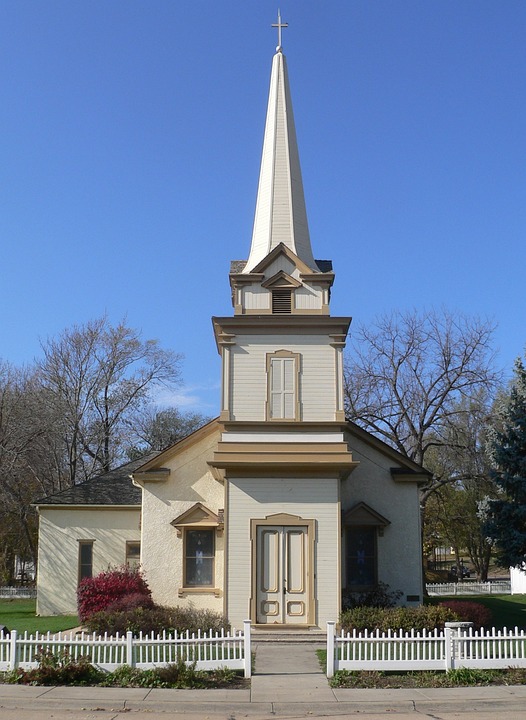The story of It is Well With my Soul

The story of It is Well With My Soul is a Christian hymn that expresses faith in God and peace of mind through loss.
In Mark 8:35-36, Jesus says our soul has great value.
God gave humanity physical life on Earth and an everlasting spiritual life that never ends.
Despite the trials and tribulations of life, a true Christian has peace of mind knowing that their soul is safe in the Hands of the Lord.
The story of It is Well With my Soul is a powerful example of faith amid devastating tragedy that threatens to overwhelm.
"It is Well With my Soul" was written after traumatic events in Horatio Spafford's life.
It began with the Great Chicago Fire of 1871, which ruined him financially and the further hit by the economic downturn of 1873.
Horatio Spafford then planned a trip to England with his family on the SS Ville du Havre, to help his friend, D. L. Moody's upcoming evangelical campaigns.
Background

The story of It is Well With my Soul
Horatio Gates Spafford (October 20, 1828, Troy, New York – September 25, 1888, Jerusalem) married Anna Larsen ((March 16, 1842 – April 17, 1923) of Stavanger, Norway, in Chicago on September 5, 1861.
Spafford was the prominent American lawyer and Presbyterian church elder who penned the Christian hymn "It Is Well With My Soul" following the Great Chicago Fire and the family tragedy in which his four daughters died aboard the S.S. Ville du Havre on a transatlantic voyage to England.
The Spaffords were supporters and friends of evangelist Dwight L. Moody who made the famous quote, “There are many of us that are willing to do great things for the Lord, but few of us are willing to do little things.” “Faith makes all things possible … love makes all things easy.” “Sometimes you can take one hundred members into the Church, and they don't add to its power."
Great Chicago Fire of 1871

The story of It is Well With my Soul
Horatio Spafford had invested in real estate in Chicago in the spring of 1871.
His fortunes would soon change for the worse in October 1871 with the Great Fire of Chicago that reduced the city to ashes and destroyed most of his investments.
The three-day inferno erased four square miles (about 2,100 acres) of Chicago's business district with 17,500 buildings and 73 miles of street destroyed.
An estimated 300 people died, 100,000 were left homeless and only 120 bodies were recovered.
The Great Chicago Fire ended when miraculous, heavy rains helped to douse the flames.
In 1873, after the devastation of the Great Chicago Fire, the Spafford family planned a trip to England to participate in revival services led there by their friend, Dwight Moody and Ira Sanky.
Late business demands however, kept Horatio Spafford from joining his wife and four daughters on the family trip to England.
SS Ville du Havre

The story of It is Well With my Soul
On 15 November 1873, the steamship, Ville du Havre sailed from New York with 313 passengers and crew on board, under the command of captain Marino Surmonte.
On Saturday, 22 November 1873, while crossing the Atlantic Ocean, the Ville du Havre collided with the British, three-masted, iron clipper, Loch Earn which was on a voyage from Bristol to New York, at 2 a.m.
The collision caused the Ville du Havre to finally break in two and sink in 12 minutes with the loss of 226 lives.
After the collision, Mrs. Spafford was picked up unconscious, floating upon a plank of wood and taken aboard the Loch Earn.
Sadly, the four of Spafford's daughters, 12 year old Anna, 9 year old Margaret Lee, 5 year old Elizabeth, and 2 old Tanetta did not survive.
Captain Robertson of the Loch Earn, rescued 26 passengers and 61 of the crew.
The stricken, Loch Earn, with its bow smashed in, commenced to sink and was abandoned at sea by her crew.
The American cargo ship Tremountain, en route from Bristol, United Kingdom to New York, successfully rescued the passengers and crew of the Loch Earn.
Upon arriving in Cardiff, Wales, Anna Spafford sent a telegram to her husband that read "Saved alone. What shall I do."
Spafford traveled to England to meet his grieving wife.
About four days into the journey, the captain called Spafford to his cabin and told him they were over the place where his children went down.
This moment inspired Horatio Spafford to pen the beloved hymn "It Is Well with My Soul."
He later wrote to his wife's half-sister, Rachel, "On Thursday last we passed over the spot where she went down, in mid-ocean, the waters three miles deep. But I do not think of our dear ones there. They are safe, folded, the dear lambs".
Philip Bliss
The story of It is Well With my Soul
The famous hymn “It Is Well with My Soul,” written by Horatio Spafford had its music composed by Philip Paul Bliss (9 July 1838 – 29 December 1876).
Philip Bliss was an American composer, conductor, writer of hymns and a bass-baritone Gospel singer who composed the music for “It Is Well with My Soul” named the hymn, Ville du Havre, after the sunken vessel.
Hymns written by Philip Bliss include "Hold the Fort" (1870), "Almost Persuaded" (1871); “Pull for the Shore” (1873); "Hallelujah, What a Saviour" (1875); "Let the Lower Lights Be Burning"; "Wonderful Words of Life" (1875); and the tune for Horatio Spafford's "It Is Well with My Soul" (1876).
His sister, Mary Elizabeth Willson was also a Gospel singer, composer and evangelist.
Survivors of the RMS Titanic disaster of 14 April, 1912, reported that passengers in lifeboats sang "Pull For The Shore" while rowing.

The story of It is Well With my Soul

Original lyrics
When peace like a river, attendeth my way,
When sorrows like sea billows roll;
Whatever my lot, Thou hast taught me to know
It is well, it is well, with my soul.
Refrain
It is well, (it is well),
With my soul, (with my soul)
It is well, it is well, with my soul.
Though Satan should buffet, though trials should come,
Let this blest assurance control,
That Christ has regarded my helpless estate,
And hath shed His own blood for my soul.
My sin, oh, the bliss of this glorious thought!
My sin, not in part but the whole,
Is nailed to the cross, and I bear it no more,
Praise the Lord, praise the Lord, O my soul!
For me, be it Christ, be it Christ hence to live:
If Jordan above me shall roll,
No pang shall be mine, for in death as in life,
Thou wilt whisper Thy peace to my soul.
But Lord, 'tis for Thee, for Thy coming we wait,
The sky, not the grave, is our goal;
Oh, trump of the angel! Oh, voice of the Lord!
Blessed hope, blessed rest of my soul.
And Lord, haste the day when the faith shall be sight,
The clouds be rolled back as a scroll;
The trump shall resound, and the Lord shall descend,
A song in the night, oh my soul!
Later years

The story of It is Well With my Soul
Following the sinking of the Ville du Havre in 1873, Anna Spafford gave birth to three more children, Horatio Goertner (November 16, 1875), Bertha Hedges (March 24, 1878), and Grace (January 18, 1881).
On February 11, 1880, their son Horatio died of scarlet fever at age four.
Financial loss and personal grief began the Spafford family's philosophical move away from material success to a lifelong spiritual pilgrimage.
In August 1881, the Spaffords went to the Holy City of Jerusalem as a party of 13 adults and three children to set up the Christian, American Colony.
Later, they were joined by Swedish Christians, engaged in philanthropic work among the people of Jerusalem regardless of their religious affiliation.
In Jerusalem, the Spafford's also adopted a boy named Jacob Eliahu (1864–1932) who was born in Ramallah into a Turkish, Jewish family.
As a schoolboy, Jacob Spafford discovered the Hebrew, Siloam Inscription found in the Siloam tunnel which brings water from the Gihon Spring to the Pool of Siloam, located in the City of David in East Jerusalem.
The inscription, dates the construction of the tunnel to the 8th century BC.
Horatio Spafford died of malaria on September 25, 1888, at the age of 59, and was buried in Mount Zion Cemetery in Jerusalem.
Anna Spafford died in Jerusalem on the 17th of April, 1923.
Power of Hymns

The story of It is Well With my Soul
Hymn, (from the Greek ὕμνος (hymnos), “song of praise”) is a song of Christian worship.
God gave us hymns to serve His Word (the Bible and His Son, Jesus Christ).
“Praise the Lord! For it is good to sing praises to our God; for it is pleasant, and a song of praise is fitting.”
-Psalm 147:1
Hymns connect us to God and His Message.
They lift us with a spiritual energy that spark the imagination of Something Greater than we could never imagine.
That Something Greater is God!
Ephesians 5:19 says, “singing and making melody to the Lord with your heart” because it is to Him and about Him that we sing!
A simple hymn can be a source of comfort and healing through beauty, reverence and purity.
Hymns unite us to God, our church and our fellow human being.

Ezine Articles Author Link
Click on the Link Below

Newsletter Opt-in-Form
The Keen Traveler
Your second block of text...
Recent Articles
-
Beauty of Christmas
Dec 11, 25 04:22 AM
The beauty of Christmas is the celebration of the real Christmas Story with the Birth of Jesus Christ, the Son of God, Who came to bring love, hope, and salvation to the world. -
Spiritual Treasures of Life
Nov 26, 25 04:44 AM
Spiritual treasures of life are internal riches that are more valuable and everlasting than material wealth. -
Teachings of Jesus Christ
Oct 14, 25 05:45 AM
The Teachings of Jesus Christ have fascinated people for centuries with their powerful Message of love and hope that have stood the test of time.


